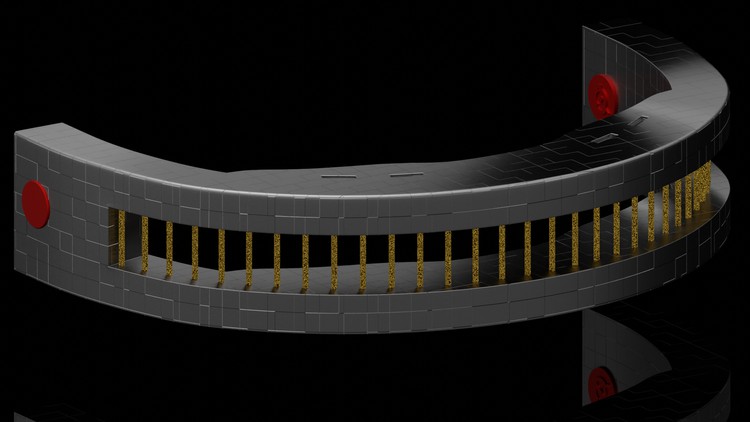
In this course, using Georgi La Forge’s visor…explore other options.
What you will learn
Basic assessment of Blender for new users.
Beginner Tips.
Learn there’s more than one way to tie your shoes.
Complete basic modeling project from start to finish.
Description
This updated course is primarily for new users to Blender, who want a small project to help them assess Blender software. It’s been updated for Blender 3.1.
If you’re new to Blender, let me attest…you don’t need to be a keyboard expert, or a hotkey wizard. However, if you’re not a math person, like myself, then I suggest you brush-up and if you have to start where you left off in school, do it.
Also, new users take heed: FIND WHAT WORKS BEST FOR YOU.
New users, the first way to evaluate any 3d software is to make something.
- Is it easy?
- Is it difficult?
- Do you have to run all over the UI?
- How many steps does it take to do anything?
- Can you remember hotkeys?
- What do you like the most?
- Is it effective to do things the long way?
- Think about deadlines…?
- Do I need this $20/$40/$100+ addon?
- Can this software bring my visions to life…the way I want?
These are but a several questions to ask yourself.
Say you don’t like La Forge’s visor in this updated course, prefer to first modeling trail course if needed.
I admit, haven’t used the array modifier much since starting Blender software and it shows, but you have an alternative.
You’re free to make adjustments and experiment.
Blender is packed with useful tools, however covering them all would be daunting, and leave your head spinning.
This course doesn’t cover: Modifiers, Addons, the Outliner, the Properties Panel, the Sidebar, the T-Panel, Hotkeys, the Dope Sheet, User Preferences, Workspaces, Texture Painting, Sculpting, Cycles, Eevee, Workbench, Grease Pencil, Compositing, Weight Painting, Keyframes, Armatures, Object mode, Timeline, Graph Editor, Image Editor, Data systems, Links, Libraries, Proxies and Animation and more.
This introduction tutorial only covers how to make a basic object within Blender’s Edit mode using a few editing tools and bringing our project to life.
Expect to make an easy and iconic object.
The steps are simple:
- – use a circle, cut the circle in half.
- – duplicate what you need, delete what you don’t need.
- – add a mirror modifier.
- – you add a Sub-Division surface modifier
- – duplicate a particular edge and adjust.
- – extruding is required, (extruding is another way of saying extending)
- – proportional editing may come into play
- – you can use the Boolean operation to block out the front section
- – you can use the Array modifier for the “tubes”, but I didn’t
- – position the “eye sensors” in place.
- – check our model over.
- – add color to our models surface and render.
Ground Rules:
- Instructor uses Blender keymap 27x.
- Concerning rules 2-3, in the future, I’ll try to keep the UI default. But, that’s difficult, giving Blender’s flexibility, addons and personal workflow.
- Despite the instructor’s speech issue, students will be able to understand everything said in this and future courses.
Your feedback is welcome.
Blender Way of Life is currently working on a channel – “elsewhere”. There you’ll see the possibilities Blender has to offer you. WIP (6-7-2022)
Content